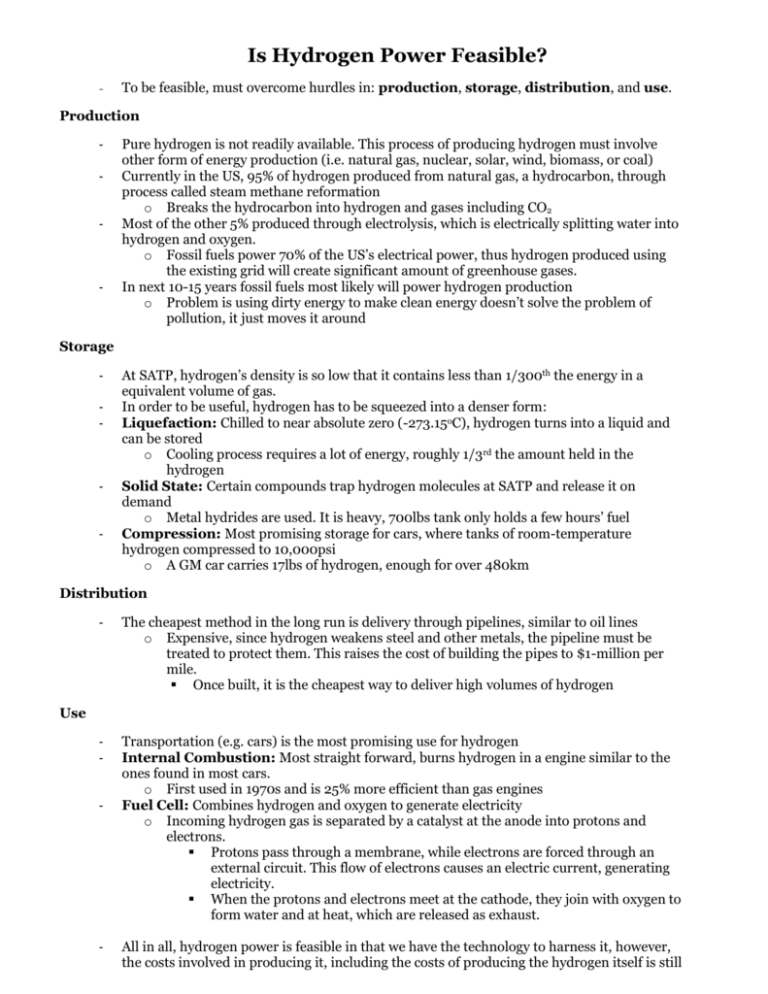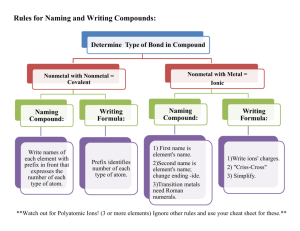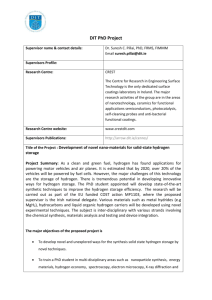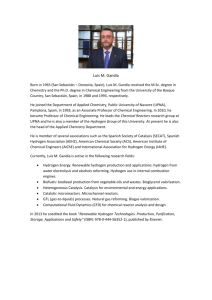Is Hydrogen Power Feasible?
advertisement

Is Hydrogen Power Feasible? - To be feasible, must overcome hurdles in: production, storage, distribution, and use. Production - - Pure hydrogen is not readily available. This process of producing hydrogen must involve other form of energy production (i.e. natural gas, nuclear, solar, wind, biomass, or coal) Currently in the US, 95% of hydrogen produced from natural gas, a hydrocarbon, through process called steam methane reformation o Breaks the hydrocarbon into hydrogen and gases including CO2 Most of the other 5% produced through electrolysis, which is electrically splitting water into hydrogen and oxygen. o Fossil fuels power 70% of the US’s electrical power, thus hydrogen produced using the existing grid will create significant amount of greenhouse gases. In next 10-15 years fossil fuels most likely will power hydrogen production o Problem is using dirty energy to make clean energy doesn’t solve the problem of pollution, it just moves it around Storage - - At SATP, hydrogen’s density is so low that it contains less than 1/300th the energy in a equivalent volume of gas. In order to be useful, hydrogen has to be squeezed into a denser form: Liquefaction: Chilled to near absolute zero (-273.15oC), hydrogen turns into a liquid and can be stored o Cooling process requires a lot of energy, roughly 1/3rd the amount held in the hydrogen Solid State: Certain compounds trap hydrogen molecules at SATP and release it on demand o Metal hydrides are used. It is heavy, 700lbs tank only holds a few hours’ fuel Compression: Most promising storage for cars, where tanks of room-temperature hydrogen compressed to 10,000psi o A GM car carries 17lbs of hydrogen, enough for over 480km Distribution - The cheapest method in the long run is delivery through pipelines, similar to oil lines o Expensive, since hydrogen weakens steel and other metals, the pipeline must be treated to protect them. This raises the cost of building the pipes to $1-million per mile. Once built, it is the cheapest way to deliver high volumes of hydrogen - Transportation (e.g. cars) is the most promising use for hydrogen Internal Combustion: Most straight forward, burns hydrogen in a engine similar to the ones found in most cars. o First used in 1970s and is 25% more efficient than gas engines Fuel Cell: Combines hydrogen and oxygen to generate electricity o Incoming hydrogen gas is separated by a catalyst at the anode into protons and electrons. Protons pass through a membrane, while electrons are forced through an external circuit. This flow of electrons causes an electric current, generating electricity. When the protons and electrons meet at the cathode, they join with oxygen to form water and at heat, which are released as exhaust. Use - - All in all, hydrogen power is feasible in that we have the technology to harness it, however, the costs involved in producing it, including the costs of producing the hydrogen itself is still very high, making hydrogen power technologically feasible, but economically unfeasible at the moment. Works Cited Brown, B, L. (2004, April 01). Turning on Renewable Energy. Mother Earth News, 100, Retrieved from http://elibrary.bigchalk.com Hydrogen Energy. (n.d.). Renewable Energy World. Retrieved November 28, 2010, from http://www.renewableenergyworld.com/rea/tech/hydrogen Khan, S. (2007, May 1). Hydrogen Power. CBC- CBCNews . Retrieved November 28, 2010, from http://www.cbc.ca/news/background/science/hydrogen-qa.html Wise, J. (2006, November 1). Truth About Hydrogen Power - Hydrogen Energy and Fuel. Popular Mechanics. Retrieved November 28, 2010, from http://www.popularmechanics.com/science/energy/next-generation/4199381







